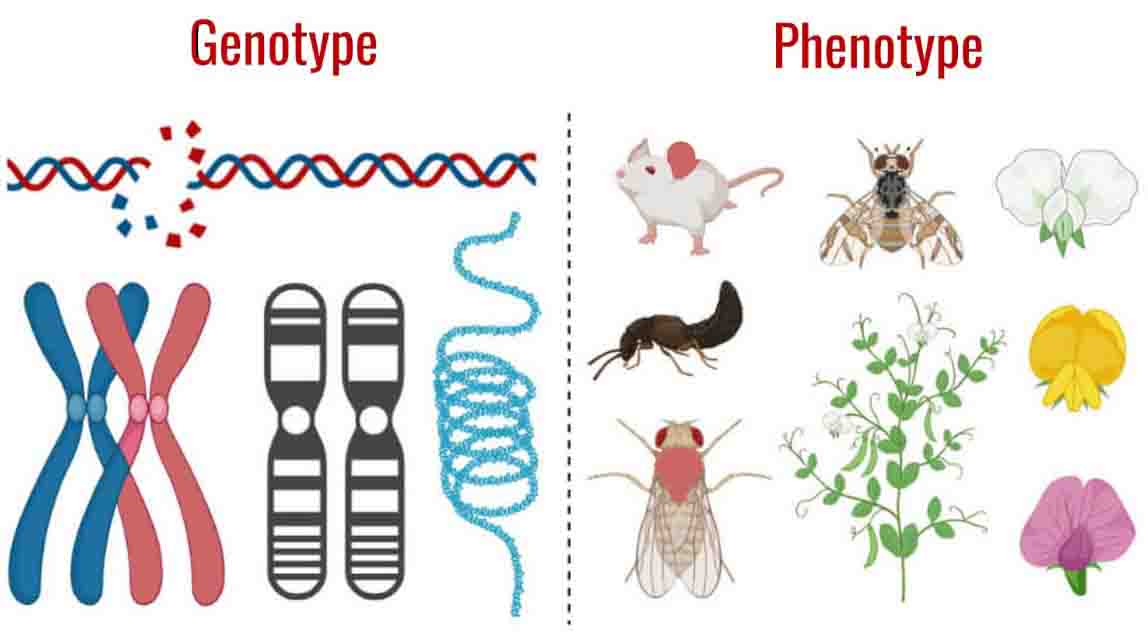An organism’s genetic makeup is called its genotype, and its observable traits are called its phenotype. An individual’s appearance is determined by their DNA. Gregor Mendel’s experiments with true-breeding yellow and green pea plants (P1) provide a great example of this concept.
Yellow and green are the phenotypes of these plants. Whenever Mendel crossed these two plants, all the offspring (F1) were yellow. The green color was not lost, as it appeared again in the next generation (F2). The traits seen in the F1 generation were determined by the underlying genotypes of the green and yellow plants, which Mendel did not know at the time.
Green and yellow P1 pea plants had identical alleles for the gene that controls color, meaning they were homozygous. All offspring of green plants are green, and all offspring of yellow plants are yellow. In contrast, when a green plant was crossed with a yellow plant, all the F1 offspring were yellow.
The F1 generation had different alleles for color because they were heterozygous for the color trait. Among the two alleles for the color gene, yellow was dominant, making all F1 plants yellow. For the pea plant to be green, its alleles must be homozygous recessive
Comparison Chart
What are the characteristics of an organism based on its genotype and phenotype? Do you know an organism’s genetic makeup? Is it observed? If so, how? By looking at the organism’s DNA sequencing, and PCR assay, if needed.By looking at the organismRefers to the information coded on alleles.
YesNoExamples include hair color, eye color, heightNoYesIs it inherited. Somewhat, one allele from each parentNoWhat does it contain (show)? Even untranslated genes are included in the heredity information for the organism. Only expressed genes are included in the heredity information.

